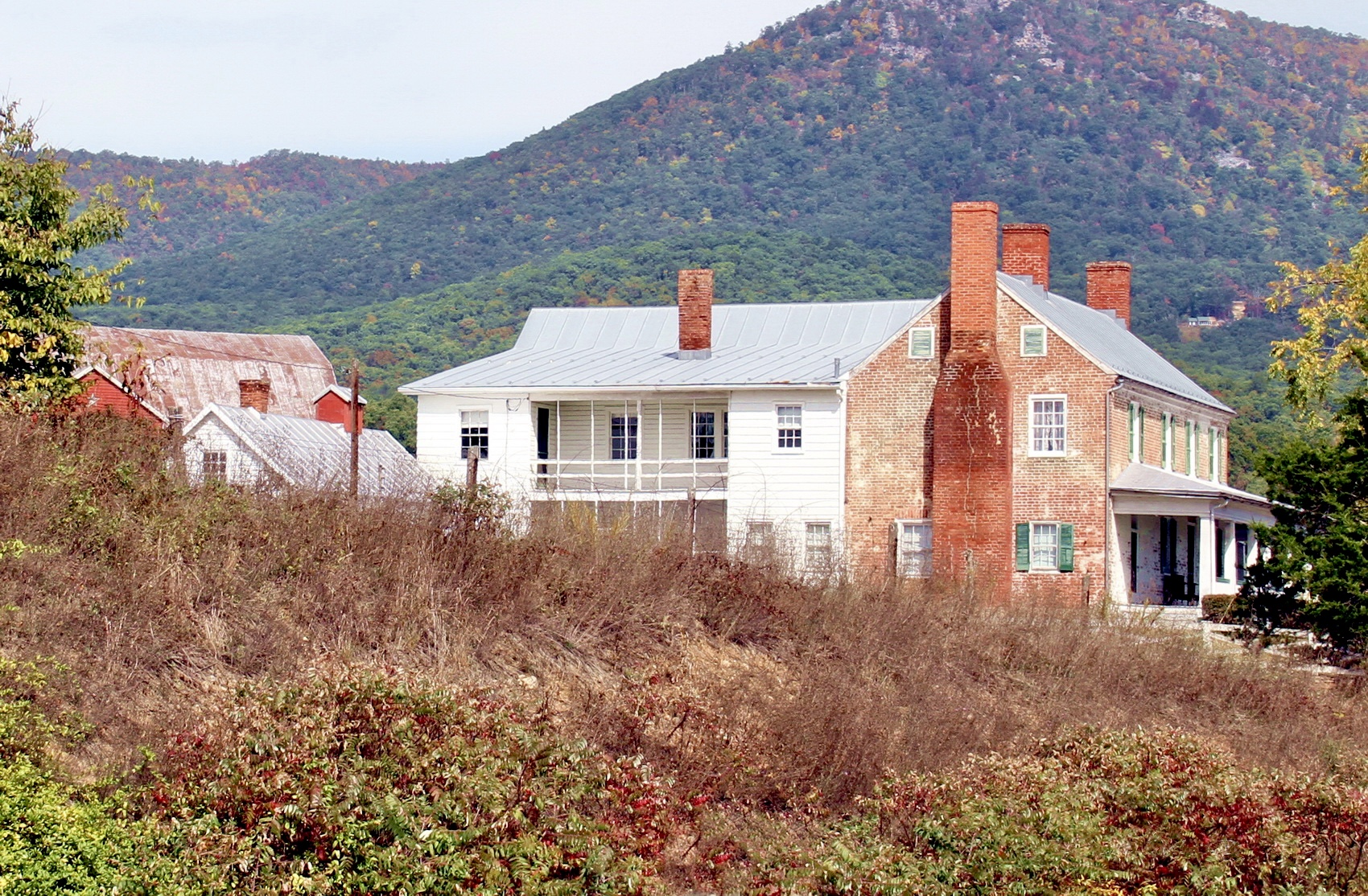
The Stonewall Jackson House, located at 8 East Washington Street in the Historic District of Lexington, Virginia, was the residence of Confederate general Thomas "Stonewall" Jackson from 1858 to 1861.

The Willa Cather Birthplace, also known as the Rachel E. Boak House, is the site near Gore, Virginia, where the Pulitzer Prize-winning author Willa Cather was born in 1873. The log home was built in the early 19th century by her great-grandfather and has been enlarged twice. The building was previously the home of Rachel E. Boak, Cather's grandmother. Cather and her parents lived in the house only about a year before they moved to another home in Frederick County. The farmhouse was listed on the Virginia Landmarks Register (VLR) in 1976 and the National Register of Historic Places (NRHP) in 1978.

Frascati is an early 19th-century Federal-style plantation house near Somerset in Orange County, Virginia. Frascati was the residence of Philip P. Barbour, Associate Justice of the Supreme Court of the United States and statesman.

Windsor Shades is located on the Pamunkey River in Sweet Hall, Virginia, United States. It is listed on the National Register of Historic Places. Archeological native artifacts found on the property surrounding the house suggest it was the site of Kupkipcok, a Pamunkey village noted on John Smith's 1609 map.

The Chimneys is a historic house located in Fredericksburg, Virginia. The house was constructed around 1771–1773. The house is named because of the stone chimneys at each end. The Georgian home was added to the National Register of Historic Places in April 1975. Of note are the interior decorative woodwork in the moldings, millwork, paneling indicative of building styles of the period. The decorative carving on the mantelpiece as well as on the door and window frames is particularly significant.

Estouteville is a historic home located near Powell Corner, Albemarle County, Virginia. The main house was begun in 1827, and consists of a two-story, seven-bay central block, 68 feet by 43 feet, with two 35 feet by 26 feet, three-bay, single-story wings. It is constructed of brick and is in the Roman Revival style. A Tuscan cornice embellishes the low hipped roofs of all three sections, each of which is surmounted by tall interior end chimneys. The interior plan is dominated by the large Great Hall, a 23-by-35-foot richly decorated room. Also on the property are a contributing kitchen / wash house; a square frame dairy ; a square, brick smokehouse, probably built in the mid-19th century, also covered with a pyramidal roof; and a frame slave quarters.
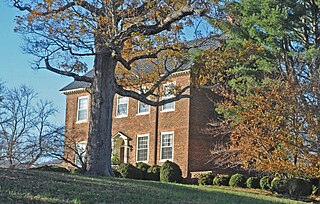
Fancy Farm is a historic plantation house located at Kelso Mill, near Bedford, Bedford County, Virginia. It was built about 1785, and is a two-story, five bay brick dwelling in the Late Georgian style. It has a metal gable roof and two interior end chimneys. The interior features original woodwork. The house was restored in 1969–1971. Also on the property are a contributing brick storehouse, a frame kitchen with a stone chimney, and a frame quarters also with a stone chimney. The property features a panorama of the Peaks of Otter. Fancy Farm was used as the headquarters of Union General David Hunter in his Lynchburg campaign during the Valley Campaigns of 1864.
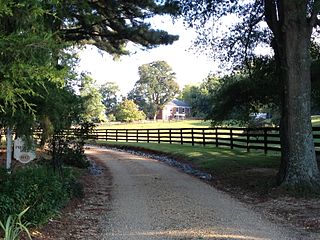
Prospect Hill is a historic plantation house located near Fredericksburg, Caroline County, Virginia. The property is entirely surrounded by lands belonging to Santee. It was built about 1842, and is a two-story, five bay, double pile, brick dwelling. It has a high hipped roof and four interior end chimneys. It features a wide single front entrance door framed by unfluted Roman Doric order columns supporting a plain entablature. Also on the property is a contributing slave house.
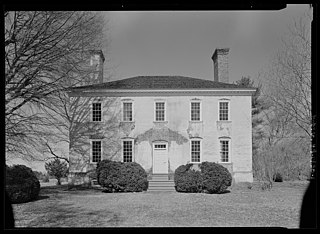
Salubria is a historic plantation house located at Stevensburg, Culpeper County, Virginia. It was built in 1757, and is a two-story, hipped roof dwelling with two large corbel-capped chimneys on the interior ends. Salubria was the birthplace of Admiral Cary Travers Grayson, personal physician to President Woodrow Wilson. In October 2000, Salubria was donated by the Grayson family to the Germanna Foundation for historic preservation.
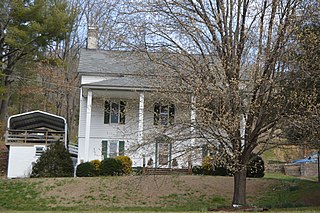
Fries Boarding Houses are two historic boarding houses located at Fries, Grayson County, Virginia. They were built as twins, and are large two-story frame buildings resting on full-height stuccoed brick basements in the Colonial Revival style. They have side-gable roofs, brick interior end chimneys, and gabled dormers. The exact date of the boarding houses is unknown, but they likely date to the first phase of village construction between 1901 and 1910.

Oakley Hill is a historic plantation house located near Mechanicsville, Hanover County, Virginia. It was built about 1839 and expanded in the 1850s. It is a two-story, frame I-house dwelling in the Greek Revival style. On the rear of the house is a 1910 one-story ell. The house sits on a brick foundation, has a standing seam metal low gable roof, and interior end chimneys. The front facade features a one-story front porch with four Tuscan order columns and a Tuscan entablature. Also on the property are a contributing smokehouse and servants' house.
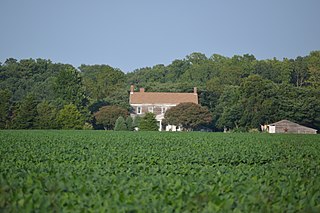
Locustville is a historic plantation house located near Ottoman, Lancaster County, Virginia. It was built in 1855, and is a two-story, five-bay, gable roofed Greek Revival style frame dwelling. It has a central passage plan and two interior end chimneys. There is a rear ell which also has an interior end chimney. It features a front porch with large Doric order fluted columns.
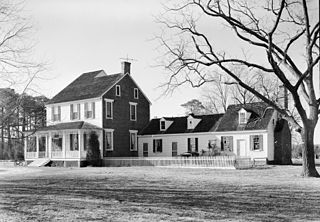
Caserta was a historic plantation house located near Eastville, Northampton County, Virginia. The oldest section was dated to about 1736. The house consisted of a two-story, three-bay main block with gable roof, and brick end with interior end chimney. It had a 1+1⁄2-story end wing and hyphen, the end wing having a large exterior end chimney and a steeper gable roof than the hyphen. The main section was built by U.S. Navy Commander George P. Upshur (1799-1852), brother of Judge Abel Parker Upshur of Vaucluse. He owned the property from 1836 to 1847. It was destroyed by fire in 1975.
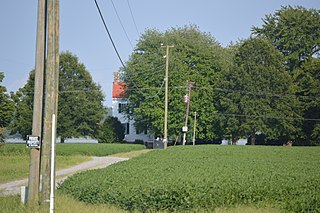
Shalango is a historic plantation house located at Wicomico Church, Northumberland County, Virginia. It was built in 1855–1856, and is a large 2+1⁄2-story, five bay, I-house frame dwelling. It has a single-pile, central-passage plan and interior end chimneys. The house stands on a tall brick basement and is covered with a gable roof pierced by three dormers on either slope. The front facade features a one-story late 19th-century porch with scroll-sawn decoration.

Kennedy–Lunsford Farm is a historic home, farm, and national historic district located near Lexington, Rockbridge County, Virginia. The district encompasses six contributing buildings. They are the main house, plus a large bank barn, a corn crib / machinery shed, a spring house, a chicken coop and a syrup house, all dating from the early-20th century. The main house is a two-story, three-bay, vernacular Georgian style stone dwelling with a gable roof and interior end chimneys. It has a single bay, gable roofed front porch and two-story rear frame ell.
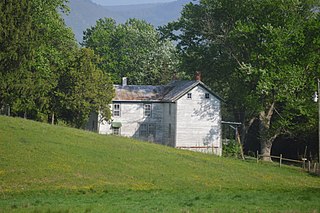
Inglewood, also known as the Robert Gray House, is a historic home located near Harrisonburg, Rockingham County, Virginia. It was built between 1849 and 1851, and is a two-story, five-bay, double pile brick Georgian style dwelling. It has a side gable roof and interior end chimneys. The house was restored in the 1940s. Also on the property are a contributing two-story, three-bay rectangular frame cabin, reportedly used as a schoolhouse, and a mid- to late 19th-century creamery.

Brown's Ferry, also known as the Mahone House, is a historic home near Courtland, Southampton County, Virginia. It was built about 1815, and is a large two-story, five-bay, Federal style brick dwelling. It has a one-story kitchen attached to the rear. The main house has a side gable roof and three interior end chimneys. The interior features notable woodwork and painting. Also on the property are a contributing smokehouse, corn crib, and pole barn. It was the birthplace of Confederate General William Mahone (1826–1895).

Little Town is a historic home located near Littleton, Sussex County, Virginia. It was built in 1811 in two sections. It consists of a two-story, three-bay, double-pile, side-hall-plan block attached to an original three-bay single cell parlor wing. It has a gable roof with a modillion cornice and interior end chimneys. Also on the property is a contributing frame dairy.
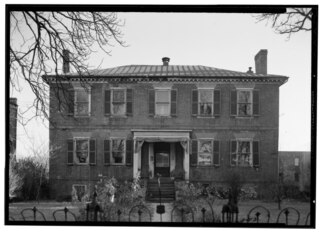
Stewart–Hinton House is a historic home located at Petersburg, Virginia. It was built about 1798, and is a two-story, five bay, Federal style brick dwelling. It has a low hipped roof and four rectangular interior end chimneys. The interior features a first-floor hall with arched entrance, elaborate cornice, flat-paneled dado, an unsupported stair and an unusual double-pile parlor with two fireplaces.

The Pace–King House, also known as the Charles Hill House, is a historic home located in Richmond, Virginia. It was built in 1860, and is a large two-story, three-bay, Italianate style brick dwelling. It has a shallow hipped roof with a richly detailed bracketed cornice and four exterior end chimneys. It features a one-story, cast-iron porch, composed of a wide center arch with narrow flanking arches, all supported on slender foliated columns. Also on the property are a contributing brick, two-story servants' house fronted by a two-level gallery and a brick structure which incorporates the original kitchen and stable outbuildings.



